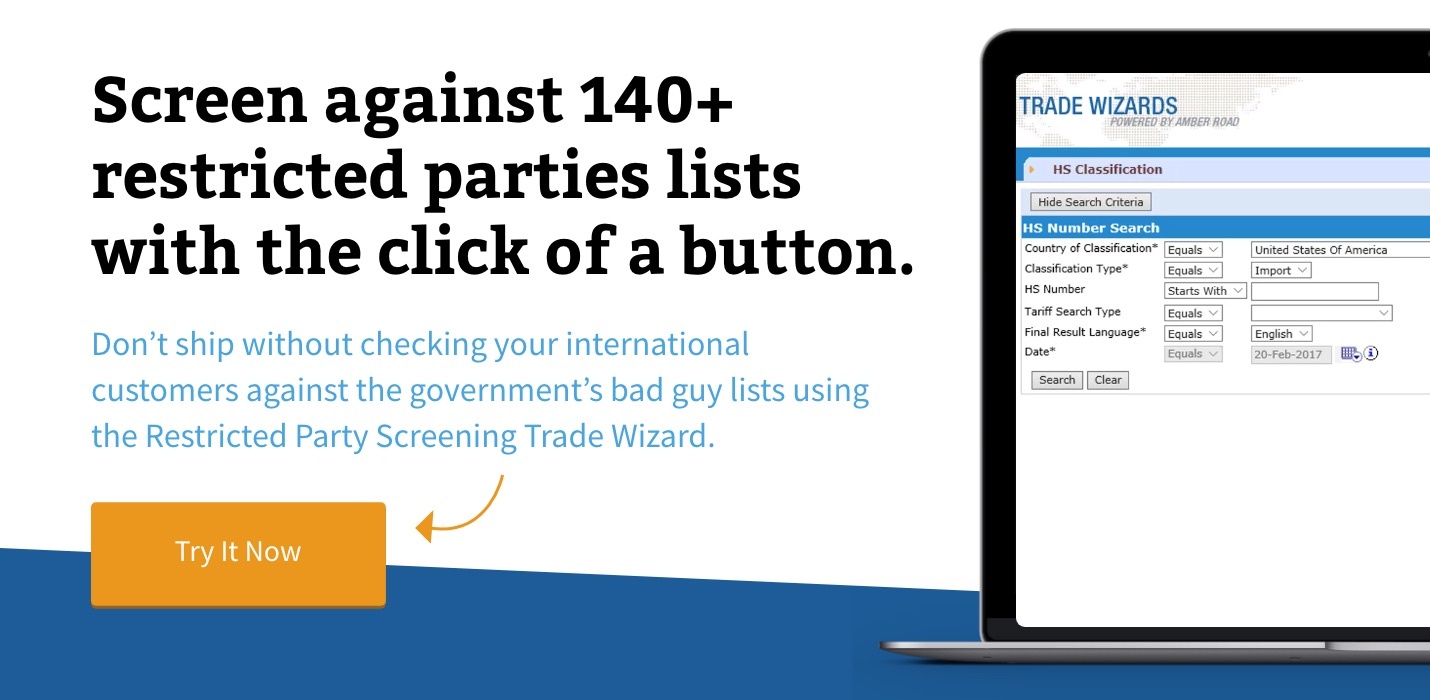The International Trade Blog Export Compliance
Why the Deemed Export Rule Is So Critical: EAR and ITAR
On: June 24, 2019 | By: Kathryn Toomey | 5 min. read
 As a former defense company employee, I remember when our company would schedule a guided tour for many of our client visitors or foreign national contract employees.
As a former defense company employee, I remember when our company would schedule a guided tour for many of our client visitors or foreign national contract employees.
Most employees would not mind being the babysitter tour guide, as we were referred to, but occasionally there were those who felt it wasn’t their job to escort others and that the current security procedures in place were sufficient enough to keep visitors from going into unauthorized areas.
After briefing those skeptical employees on the security and deemed export rules, they still refused to acknowledge the importance of protecting our technology and continued to believe that the deemed export rules were nothing more than someone at our firm trying to hype their position to justify their existence at the company. I’m sure many of you out there know people like this at your companies or have run across those who think this way.
Today, employers must understand that even the slightest exposure of technology or information by a company to any foreign national can trigger the deemed export rule and cause the company to violate U.S. export regulations. Such a release could cause criminal and civil penalties as well as incarceration for employees involved in the violation.
The Deemed Export Rule Defined
To understand why deemed exports are so critical, let’s explore the deemed export rule. The deemed export rule is the release of controlled technology and information to a non-U.S. person regardless of where the export takes place. A non-U.S. person can be a foreign national, a foreign government entity, a foreign company, a foreign military, or anyone who is not legally considered a U.S. person under the terms of the Export Administration Regulations (EAR) and the International Traffic in Arms Regulations (ITAR).
Once the technology is released to the foreign national, the U.S. government considers it “deemed” to be an export to the individual’s home country. Most often, deemed exports occur in your U.S. office, over the phone, through email, or during meetings.
For those of you out there who think the deemed export rule is unimportant or unenforceable, consider the Suntek Microwave, Lattice Semiconductor, Ingersoll Machine Tools cases.
Suntek’s president was imprisoned for nearly 12 months and assessed a $339,000 criminal fine. The violation occurred when the company had Chinese national employees trained in their controlled manufacturing technology without Suntek obtaining a deemed export license.
Lattice Semiconductor was fined nearly $560,000 for unlicensed deemed exports. Ingersoll paid a $126,000 civil penalty for seven unlicensed deemed exports of production and development technology to Indian and Italian nationals.
You'll find many more examples of deemed export violations—and the hefty fines and penalties assessed—on the Bureau of Industry and Security (BIS) website.
To ensure your company’s compliance with the deemed export rule, it is imperative that companies take it seriously, obtain as much knowledge and education on the export rules as possible, and be proactive in maintaining ongoing compliance. Every company should have deemed export policies and procedures in place and make them a part of all employees’ regular and ongoing compliance training.
EAR and ITAR
Both the EAR and the ITAR govern exports to foreign nationals. Under the EAR, BIS controls the release of dual-use items and technology to foreign nationals. Under the ITAR, the Directorate of Defense Trade Controls (DDTC) regulates goods and services designed for military purposes including the release of technology, training, weapons, satellites, munitions and all other items covered under the United States Munitions List (USML).
Both BIS and DDTC use broad brushstrokes when they refer to the release of technology, which includes the “visual inspection or view” of technology, manufacturing operations, emails, staff meetings, and drawings. Even oral conversations can be considered deemed exports.
This makes the deemed export rule difficult for U.S. employers, especially those who hire foreign nationals, conduct plant tours for visitors, or entertain prospective foreign buyers. Even foreign national students enrolled in U.S. universities working on controlled technology are subject to the deemed export rules. Typically, companies involved in aerospace, defense contracting, electronics, semiconductors, software, energy, telecommunications, manufacturing industries, and even universities are most susceptible to deemed export issues.
All companies involved in any controlled technology, whether EAR or ITAR, must make it a priority to determine whether a license is required long before any activity takes place. Under the ITAR, a deemed export would require a DSP-5 license, Technical Assistance Agreement (TAA), or Manufacturing License Agreement (MLA) as applicable. If you are uncertain as to whether you need a deemed export license or an ITAR license, you should seek appropriate assistance from a compliance professional or direction from DDTC before beginning any activity.
In addition to determining licensing requirements, companies should carefully screen all foreign nationals, visitors, potential employees, international buyers and even vendors. While the regulations do not specifically require extensive background checks and screening, implementing robust compliance procedures can help minimize risk exposures and potential violations.
Companies should also integrate regular self-assessments into their compliance plan as an added measure to minimize liabilities. A robust compliance policy will cover when and how to apply for a deemed export license long before any deemed export activity takes place.
Companies also must have adequate, regular and consistent deemed export training in place for all employees. Companies and employees must understand that a physical export does not have to take place for a deemed export to occur. Remember that by merely discussing controlled technology or by jotting down information on a cocktail napkin in the presence of a foreign national that a deemed export violation could occur, whether intentional or not. The export of controlled technology to a foreign national is a deemed export regardless of where or how the export takes place.
While it is impossible for us to review everything about deemed exports in this article, I hope that the information provided has helped you to understand what a deemed export is and that enforcement actions are severe for those who do not comply.
I recommend that every company include deemed export procedures into their compliance policy and provide regular and consistent training to their employees. Proactive compliance is one of the best preventative measures and is a mitigating factor should an issue arise.
This article was first published in December 2009 and has been updated to include current information, links and formatting.
About the Author: Kathryn Toomey
Kathryn has twice founded a run a successful global trade compliance and business consulting firm. She is a passionate leader that believes in creating positive and healthy work environments where all employees are supported and encouraged to be their personal best.
She has nearly 30 years of expertise in regulatory affairs, global trade compliance, risk management, manufacturing, supply chain operations, and defense program management, and is recognized as the go-to leader who effortlessly goes from the boardroom to the shop floor and turns challenging situations into successful win-win solutions.





